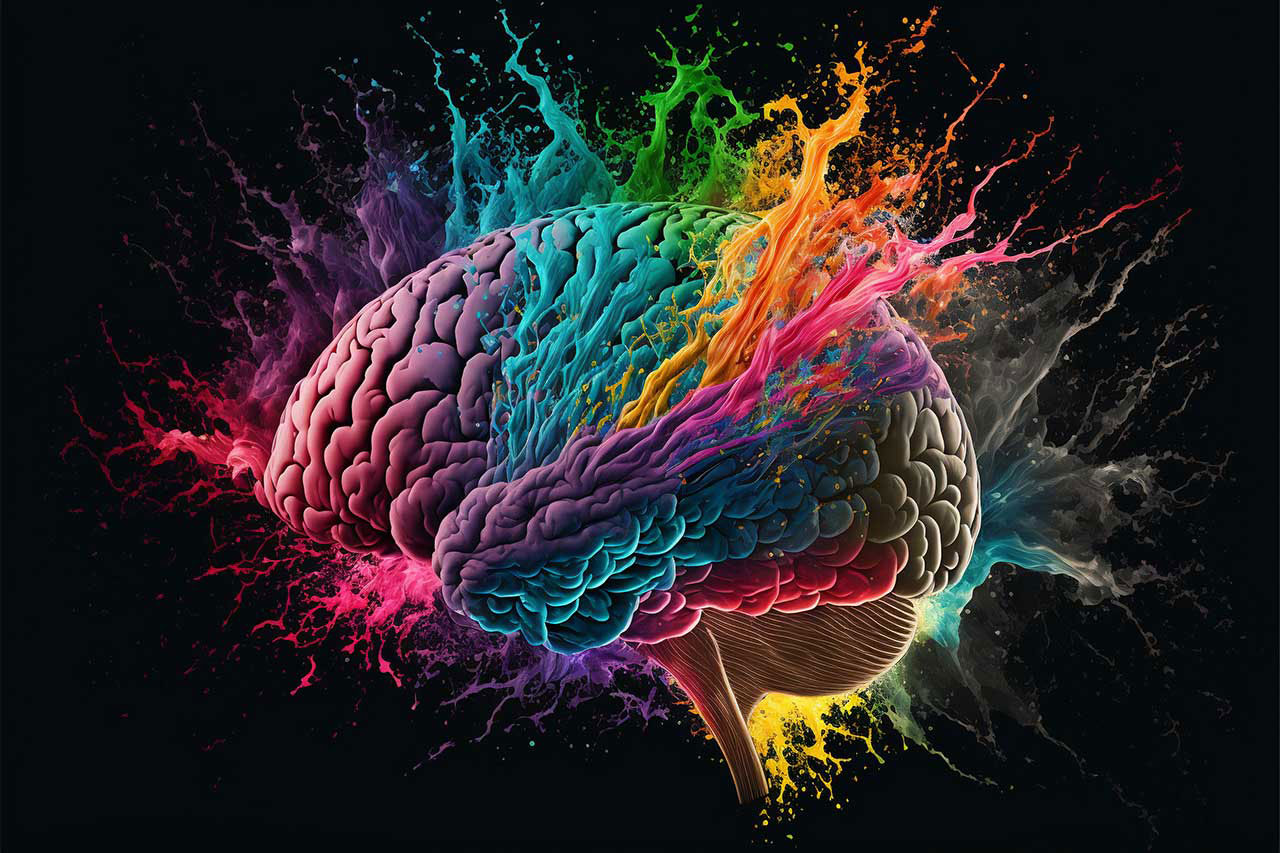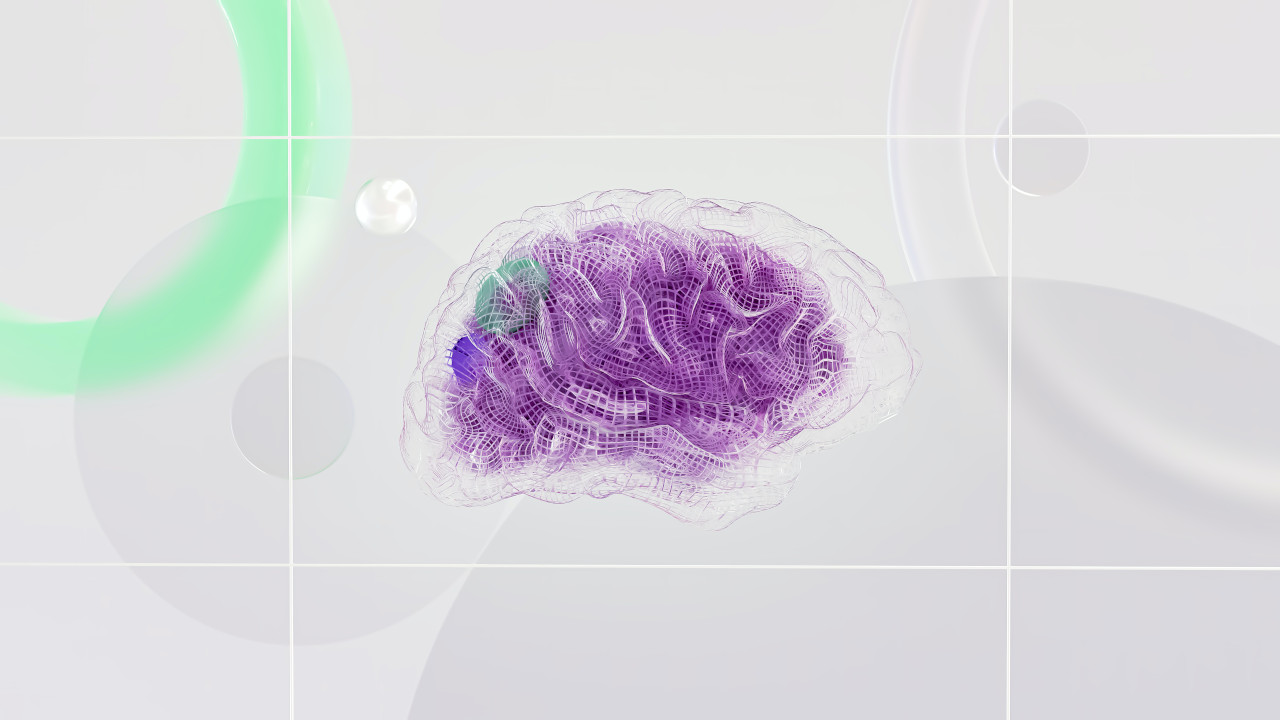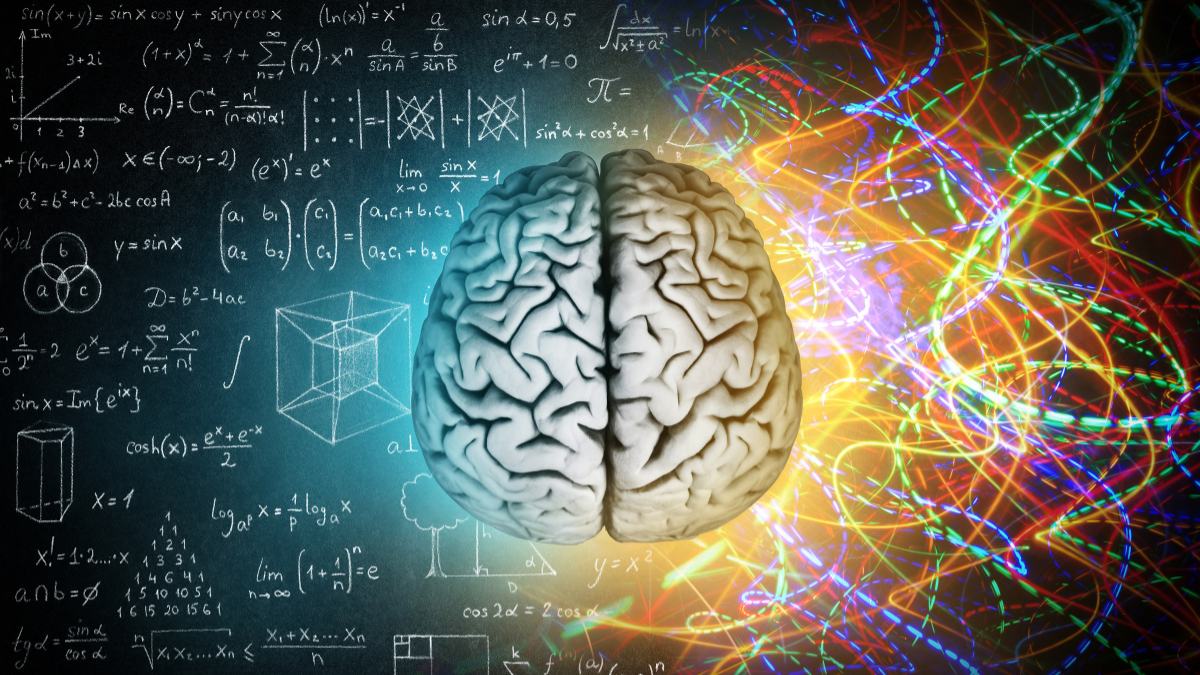Those 80 billion neurons in your brain are constantly communicating in a frenzied buzz that gives rise to the variety of thoughts and feelings that you’re more familiar with.
But at different times, and in different situations, the patterns of communication change. Sometimes they’re talking very fast, sometimes rather slow; sometimes one group of brain regions are talking, and then some others take over.
When we look at gamma waves, we’re looking at the fastest of those conversations. The oscillations we pick up from an EEG headset range from 30 cycles per second to upwards of 100.
You find gamma waves when you are highly alert, fully conscious, and aware of what you’re doing or what’s happening around you. When you need to solve problems and use all that intellectual power at your disposal, gamma waves make it happen.
Here are 7 features of cognition and consciousness that science has linked to gamma brain waves:
1. Learning and Memory
Gamma waves have been tied to different elements of learning and memory. When we are more alert and aware of what’s going on, we take in more information and store more of it away in memory—and gamma waves are at the heart of this.
Producing gamma waves effectively is key to managing working memory, which is that inner mental space you use to juggle and manipulate information at any given time.
There’s a so-called “magical number” of 7, give or take 2, that is suggestive of the limit of our working memory. The details are a little more complicated, but if you’ve ever had to memorize a telephone number on the spot, you’ll be familiar with the constraints.
The more information you can deal with (ie: the better you are able to remember that phone number) the more you’ll be relying on gamma waves. Solving problems and juggling tasks clearly depend on this.
Working memory is rather short-term, but gamma waves also play a role in long-term memory, and as we’ll see, degenerative issues such as Alzheimer’s are associated with a lack of gamma waves.
2. Better Concentration
Knowing that gamma waves help us manage working memory, it’s only a short jump over to the features of focus and attention, after all, if you’re solving problems and filling your head with information you must also be concentrating on it.
In both animal and human studies gamma waves have been linked to better concentration. One study found a similar link when the gamma waves were induced, suggesting you don’t only get gamma waves by paying attention, but you can pay attention by generating gamma waves (some help on this later in the article).
But before you rush to master gamma waves thinking you’ll be able to do more all at once, gamma waves are unlikely to make you an effective multitasker. Attention really only works when you’re honed in on one activity or task at a time.
If you try to do too much you’ll have plenty of info swirling around your head, but it’ll be jumbled and disorganized, your attention scattered and memory cluttered. The system’s overloaded and gamma waves won’t save it.
Better take a step back, find one thing to focus on, and get the gamma running smoothly again.
3. Higher Perception
While attention and memory work in tandem to help you navigate the environment and solve problems, they both rely on another skill your brain performs: perception.
When you point your eyes in some direction, it might feel easy to understand what you’re looking at, but so much needs to happen behind the scenes—identifying features like edges, depth cues, movement, and so much more.
Beyond that, we don’t just see, we hear and feel and smell and taste. And we often do more than one at once.
If you talk to someone, you’re combining auditory information from the spoken words; visual information from their mouth, face, and maybe even hand movements; then your memory elaborates on those details with relevant past experiences that help you understand what’s being said.
But that doesn’t feel like a jumble of different things to pay attention to. Rather, it all seems to come together into a single, conscious perception.
While there is still much debate and research into how this takes place, there is some convergence on the idea that gamma waves play a significant role, helping to synchronize different areas of the brain together in the necessary ways.
4. Emotional Control
When we perceive and attend to things we’re often awash in a related emotional experience, and brain waves in general are important markers for those inner feelings.
Emotions can vary on scales of valence (positive or negative) and arousal (high or low energy). For instance, a state of calm would be positive and low energy, while fear would be negative and high energy.
The arousal component most naturally corresponds to the level of brain wave activity—the more alert and attentive you are the higher the band of brainwaves you’ll be in.
For instance, when we meditate to calm the mind lower bands of alpha and theta will come to dominate. Meanwhile, one study found gamma waves in positive emotions like joy, interest, and amusement.
However, there is much more to emotions and brain waves than this, including what specific brain areas and networks are involved.
For example, some experienced Buddhist meditators show increased gamma activity in different regions. There are also differences in gamma activity in those with depression and bipolar disorder.
Another interesting finding is that gamma waves appear to play a role in emotional control, so perhaps our ability to keep a poker face and not wear our emotions on our sleeves is the product of gamma waves.
5. Flow
Flow is a very particular psychological experience that involves the complete absorption of our attentional capacities but also features a level of automaticity and quick, intuitive decisions. Think of a musician improvising solos, or athletes performing at their peak.
Flow hinges on the difficulty of the task you’re taking on, as well as your interest in it. You need a balance of skill and difficulty, and you have to really want it.
When all goes right and you enter a flow state, your brain reveals a signature pattern of activity, with a delicate balance between both theta and alpha waves present. So where are the gamma waves? They’re in the preparation.
In order to be good enough at something that you can perform with fluency and speed, you need to struggle. You need to learn, and as we’ve established, that requires gamma waves to help manage and make sense of all the new data you’re feeding it.
Gamma waves are a necessary precursor to a flow state. The better you can manage this phase, the quicker you’ll pick up new skills and the sooner you’ll find yourself with that sense of automaticity and flow.
6. Intelligence
After having seen how gamma brain waves underlie important cognitive processes like memory and attention, it is little wonder that their activity is also a marker of intelligence.
Our ability to solve novel problems that come our way requires more than just focus and determination, it necessitates drawing on relevant knowledge and the creative manipulation of ideas to get the desired result.
But there are also quite different forms and types of intelligence, depending on who you ask. Some simply apply it to IQ, others distinguish between fluid and crystallized intelligence, and others still break it down into verbal, visual, logical, and more.
However many intelligences’ there are, studies have implicated gamma waves in several of them—though like the emotion component the timing and location of the gamma waves are significant.
One study found gamma waves involved in both verbal and emotional intelligence; two others have found delta-gamma and theta-gamma coupling to be involved in fluid intelligence; yet another found that applying gamma-level stimulation to the prefrontal cortex accelerated logical reasoning.
7. Alzheimer’s Treatment
Gamma waves play essential roles in many aspects of higher cognition, including memory and attention, so it is unsurprising that people suffering from Alzheimer’s disease show decreased levels of gamma wave activity.
Researchers such as Li-Huei Tsai wondered if generating gamma waves might provide a possible treatment for the disease.
With her team, she used flickering LED lights to produce gamma waves in mice with Alzheimer’s and found that it reduced beta-amyloid plaques and other debris from microglia cells that are associated with the disease.
While further research needs to be done in people, producing gamma waves with light is a noninvasive technique with promising early results. Might the promotion of gamma waves also help protect us against neurodegenerative diseases?
How to Achieve Gamma
Given all the potential benefits to a brain that can produce gamma waves, you might well be wondering what you can do to encourage your brain to produce more of them.
A couple of the studies mentioned above relied on transcranial magnetic stimulation—the application of a magnetic force that can produce gamma waves.
The classic “don’t try this at home” advice applies here—the equipment is likely a little pricey and you’d need to know exactly where to apply the gamma waves to get the results you want. Getting it wrong could be ineffective or even cause problems.
There are less forceful, more natural (and affordable!) ways to get your gamma brain waves going. Here are some options:
Neurofeedback
If you were disappointed that transcranial magnetic stimulation isn’t a good option and really want an interesting piece of technology to aid you, neurofeedback is the way to go.
With a non-invasive EEG device, you can watch your brain wave patterns on a screen, see how they change when you perform different tasks and activities, and train yourself to get into the right patterns more effectively.
Meditation
Meditation has often been touted for giving people greater control of their thoughts and attention. These benefits show up in brain wave patterns too—not just gamma, but any band you might want to achieve.
One study found all three of Vipassana, Himalayan Yoga, and Isha Shoonya meditation traditions increased the prevalence of gamma waves, and they also scaled with meditation experience.
Music
Songs are powerful manipulators of emotion that can pick us up or calm us down when we need them. No surprise they also exert a strong influence on brain wave patterns.
It’s not just music but sound itself that prompts the brain into certain oscillations. Playing a note at a 40 Hz frequency can encourage parts of the brain to do the same. For more information check out the science behind binaural beats.
Diet
There is some evidence that the things we eat influence brain patterns. While this isn’t as immediate an effect as music or meditation, a good diet can help ensure your brain is running effectively in the long run.
With regard to gamma waves, both dark chocolate and pistachios have been linked to them. Fortunately for us, they both pair very well together.
Balance is Important
While we’ve sung the praises of gamma waves and all the amazing things they do, the brain requires an optimal balance to be healthy and effective.
Gamma waves play an essential role in higher cognitive functions—we rely on them to learn, problem-solve, exert self-control, and concentrate on what we’re doing.
But we need some downtime too. The other brain waves are just as important and need their time in the sun. It’s worth looking into what the science says about them too.
Fortunately, activities like meditation and neurofeedback can help train your brain to move more effectively between all of the different brain wave patterns.
Give it time and you’ll be able to reap a variety of rewards, from better sleep and relaxation all the way up to flow states and higher intellectual capacities.




